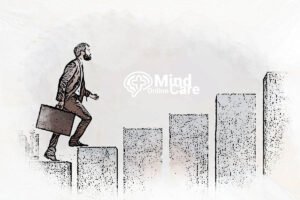In our increasingly complex world, the concept of mental health has taken on profound significance. It goes far beyond simply the absence of mental illness or psychiatric conditions. Rather, mental wellness encompasses a holistic state of psychological, emotional, and cognitive well-being that empowers us to navigate life’s challenges, cultivate meaningful relationships, and contribute positively to our communities.
Mental wellness is not just a personal pursuit, but a fundamental human right and a crucial component of overall health and development. By understanding the multifaceted nature of mental wellness, we can not only address mental health concerns but also foster an environment that nurtures psychological resilience, emotional stability, and cognitive acuity for all.
Key Takeaways
- Mental wellness is more than the absence of mental illness; it encompasses a state of psychological, emotional, and cognitive well-being.
- Mental wellness is a fundamental human right and essential for personal, community, and socio-economic development.
- Promoting mental wellness requires a comprehensive approach that addresses individual, social, and structural factors.
- Resilience and flourishing are key goals of mental wellness, empowering individuals to navigate life’s challenges.
- Protecting mental health is a global priority, with interventions targeting suicide prevention, workplace well-being, and community-based care.
Mental Health: A Comprehensive Understanding
Mental health is a multifaceted concept that extends far beyond the mere absence of mental illness. It encompasses our emotional, psychological, and social well-being, shaping how we think, feel, and behave. Recognizing this broader perspective is crucial in cultivating a holistic understanding of mental health.
Mental Health as More Than the Absence of Illness
Traditionally, mental health has often been viewed through the lens of mental illness, with the assumption that the absence of a diagnosed condition equates to good mental health. However, this narrow perspective fails to capture the nuances of the mental health continuum. Even individuals without a mental disorder may struggle with persistent challenges, such as stress, worry, or loneliness, which can significantly impact their overall well-being.
The Dual Continuum of Mental Illness and Mental Wellness
- The dual continuum model presents a more comprehensive understanding of mental health, where mental illness and mental wellness are seen as separate, yet interconnected, dimensions.
- The horizontal axis measures the presence or absence of mental illness, while the vertical axis represents the level of mental wellness, ranging from “languishing” to “flourishing.”
- This model recognizes that individuals can experience varying degrees of mental wellness, even in the presence of a mental disorder. Conversely, those without a diagnosed condition may still struggle with emotional and psychosocial impairment due to “languishing” rather than “flourishing.”
- Practices that enhance mental wellness, such as building strong social connections, practicing mindfulness, and developing resilience, can serve as protective factors against the development or worsening of mental illness.
By embracing this dual continuum approach, we can gain a more nuanced understanding of mental health and tailor our support and intervention strategies accordingly. This holistic perspective empowers individuals to prioritize their overall well-being, regardless of their mental health status, and work towards a state of flourishing.
“Mental health is not just the absence of mental illness, but a state of well-being in which an individual realizes their own abilities, can cope with the normal stresses of life, can work productively, and is able to make a contribution to their community.”
The Pathways to Mental Wellness
Mental wellness is an active, lifelong process that involves strengthening our mental, emotional, social, and psychological resources. It’s a proactive strategy to prevent and cope with life’s adversities, as well as to build resilience and ultimately, flourish as human beings.
Mental Wellness as an Active Process
Achieving mental wellness is not a passive endeavor; it requires conscious effort and a commitment to self-care. This includes practices like managing stress, cultivating healthy relationships, and engaging in activities that nurture our overall well-being. Mental wellness is an ongoing journey, not a destination, and it looks different for each individual.
Resilience and Flourishing: The Goals of Mental Wellness
The ultimate aims of mental wellness are resilience and flourishing. Resilience is the ability to bounce back from challenges and adversity, to adapt and grow through difficult experiences. Flourishing, on the other hand, represents a deeper, richer, and more meaningful human experience – a state of self-actualization and the realization of our full potential.
The notion of flourishing as the peak mental state has been shaped by developments in positive psychology, which emphasizes the cultivation of well-being, happiness, and human fulfillment. For some, flourishing may mean functioning at the highest level and achieving life goals, while for others, it could signify a sense of purpose, meaning, and self-transcendence.
By embracing mental wellness as an active process, we can cultivate the resilience and flourishing that enable us to live more fulfilling, meaningful, and rewarding lives. It’s a journey worth embarking on, for the betterment of both our individual and collective human potential.
define mental health: A Multidimensional Concept
Mental, Emotional, Social, and Psychological Dimensions
Mental wellness is an intricate, multifaceted resource that empowers us to think, feel, connect, and function effectively. It encompasses several intertwined dimensions:
- Mental: The cognitive processes of how we perceive, understand, and utilize information.
- Emotional: The ability to recognize, express, and manage our feelings and emotions.
- Social: The capacity to foster and maintain healthy relationships, as well as engage with our community.
- Psychological: The way we act, make decisions, and integrate external inputs with our internal capacity to function and thrive.
Mental wellness is not merely about our mental or cognitive abilities; it also encompasses our emotional experiences, social interactions, and overall psychological well-being. It is a dynamic, renewable, and positive resource that requires conscious effort to build resilience, grow, and flourish.
As research has demonstrated, various factors, such as school sport participation, community engagement, and mindfulness practices, can significantly impact the different dimensions of mental wellness. By addressing these multifaceted aspects, we can holistically promote mental health and well-being.
“Mental wellness is a comprehensive state of being that goes beyond the absence of mental illness. It is the ability to thrive, connect, and function in a meaningful way.”
Determinants of Mental Health
Throughout our lives, a multitude of individual, social, and structural factors can converge to either protect or undermine our mental health, shifting our position on the mental health continuum. Personal psychological and biological attributes like emotional skills, substance use, and genetic predispositions can increase our vulnerability to mental health challenges. Likewise, exposure to unfavorable social, economic, geopolitical, and environmental circumstances – such as poverty, violence, inequality, and environmental deprivation – heightens our risk of experiencing mental health conditions.
Individual, Social, and Structural Factors
These risks can manifest at all life stages, with those occurring during developmentally sensitive periods, especially early childhood, being particularly detrimental. For instance, exposure to family and community violence has been shown to impact child coping and mental health, underscoring the critical role of traumatic experiences in our well-being.
Protective and Risk Factors Across Life Stages
Fortunately, protective factors that strengthen resilience can also be found at the individual, social, and structural levels. These include personal social and emotional skills, positive social interactions, quality education, decent work, safe neighborhoods, and community cohesion. Each single risk and protective factor has limited predictive strength, as most people do not develop a mental health condition despite exposure to a risk factor, and many with no known risk factor still develop a condition. Nonetheless, the interacting determinants of mental health serve to enhance or undermine our overall mental wellness, with risks and protective factors present at different scales, from local threats to global challenges like economic downturns, disease outbreaks, humanitarian emergencies, and the growing climate crisis.






